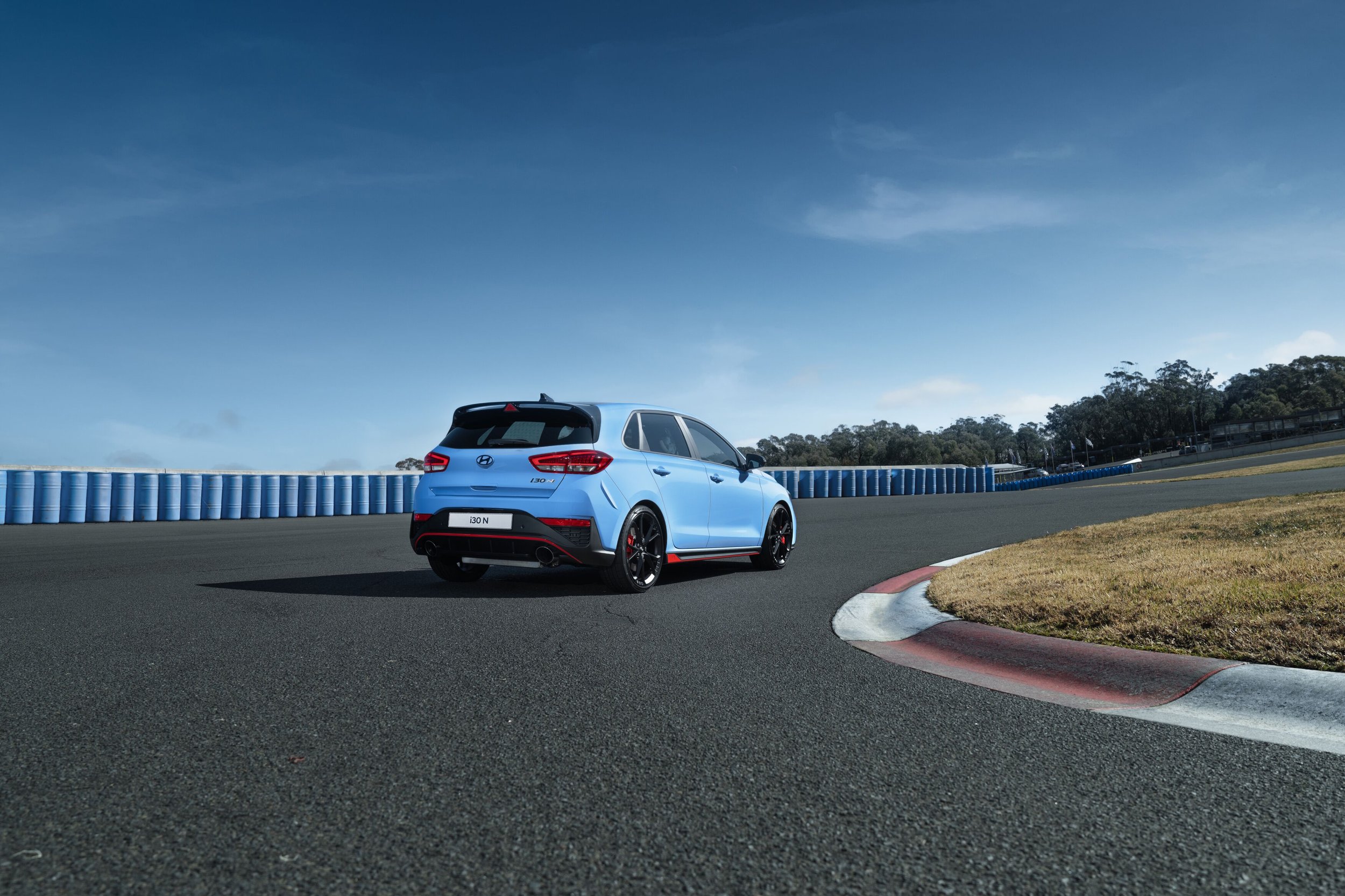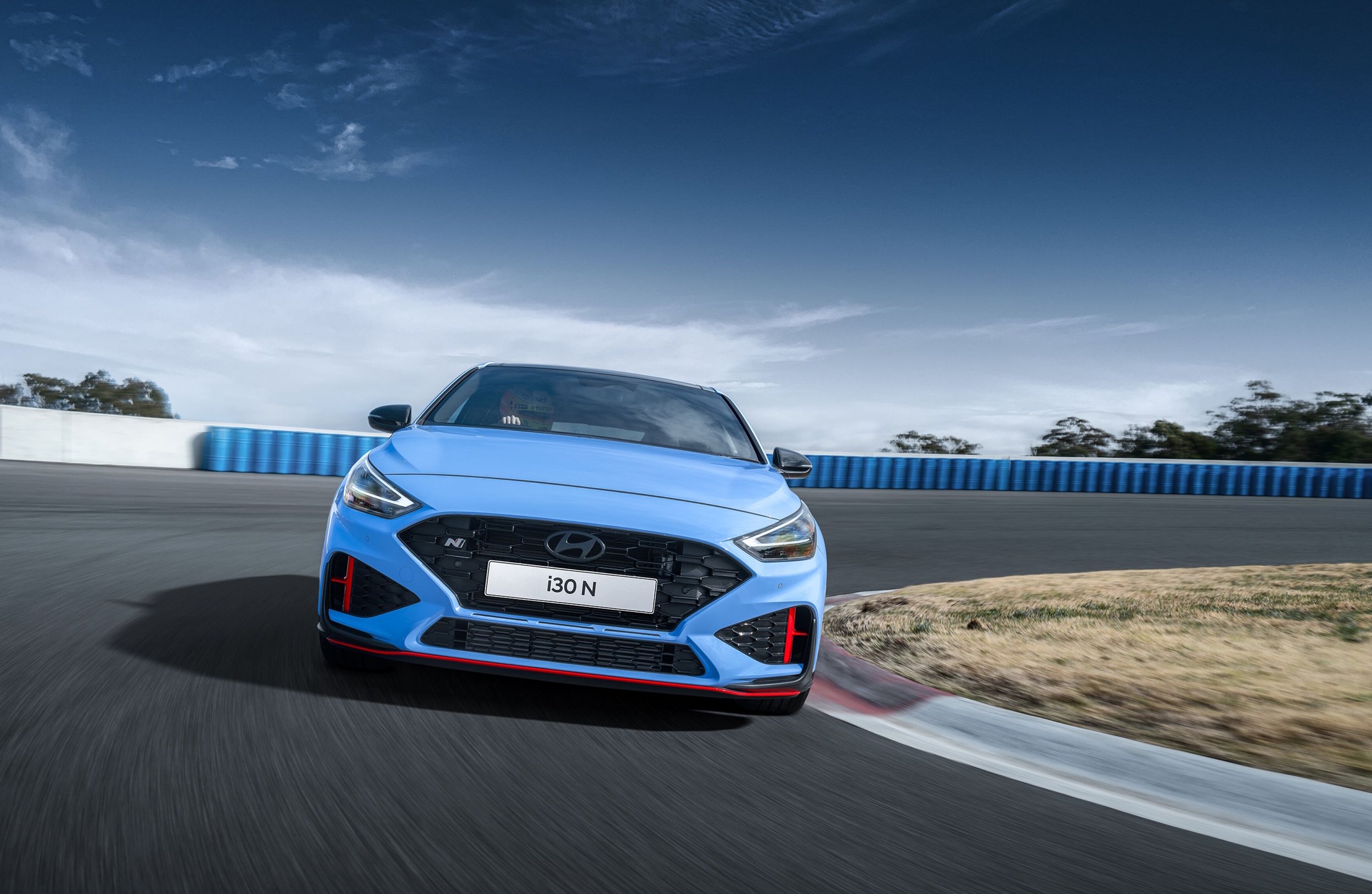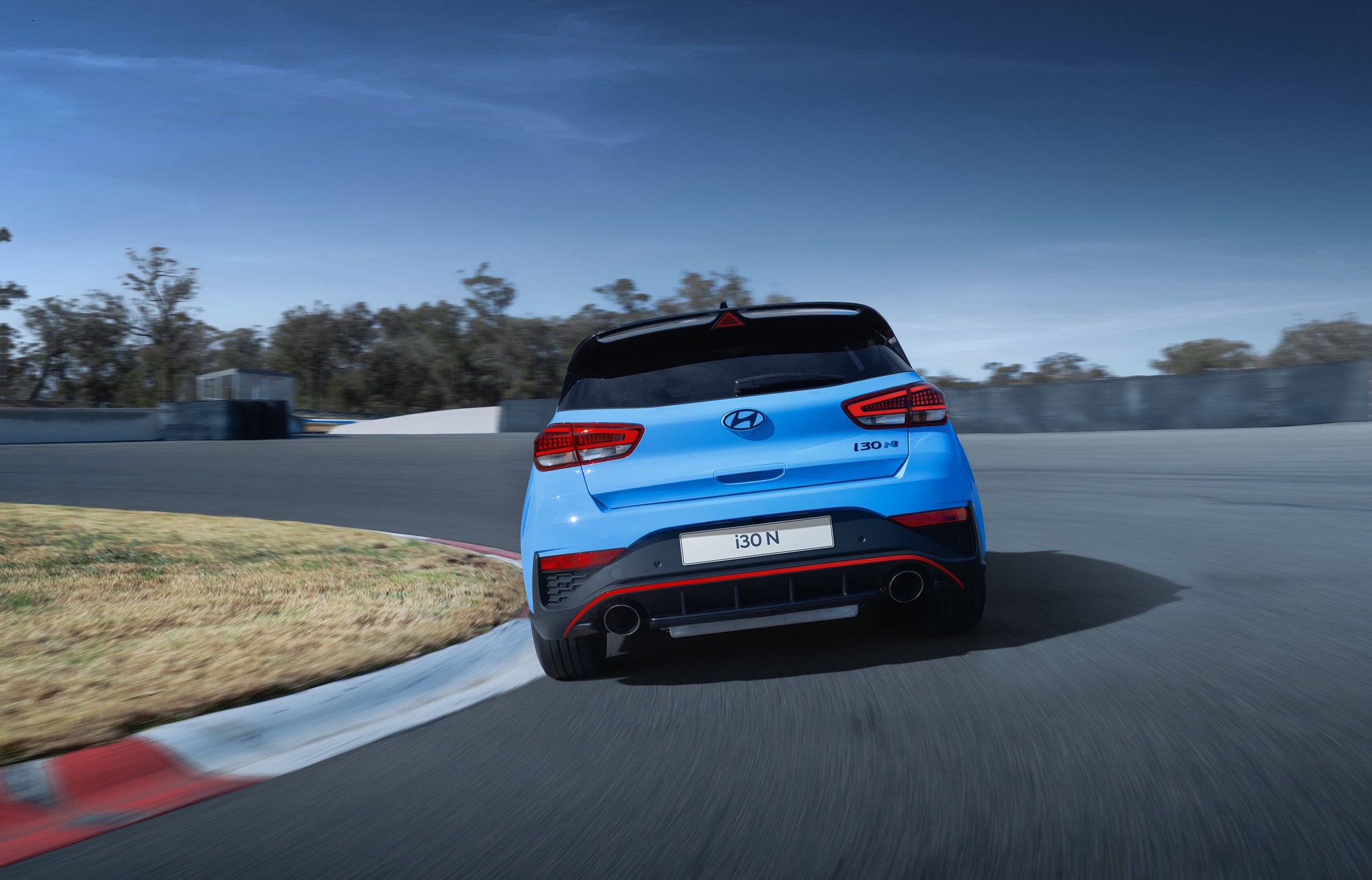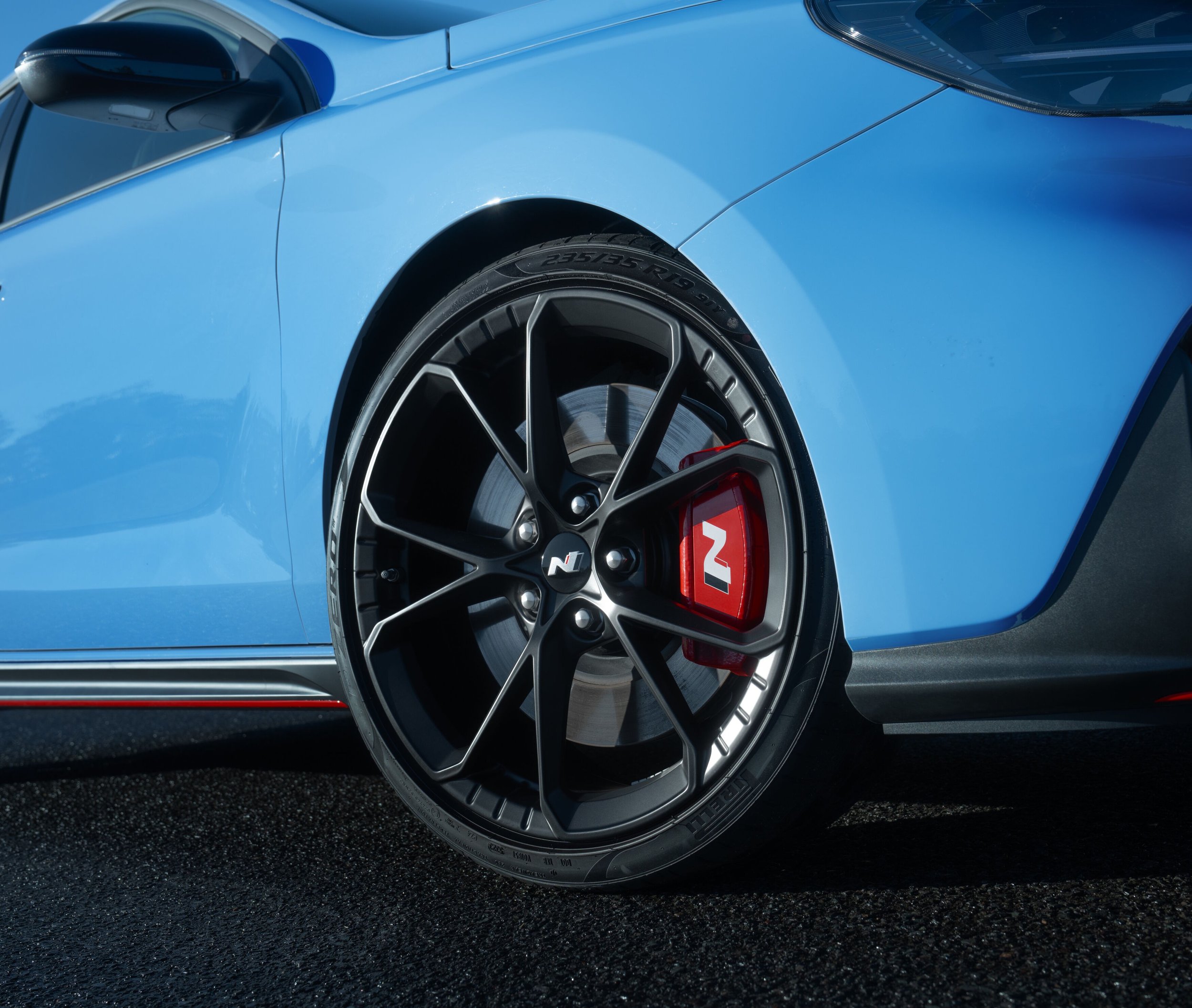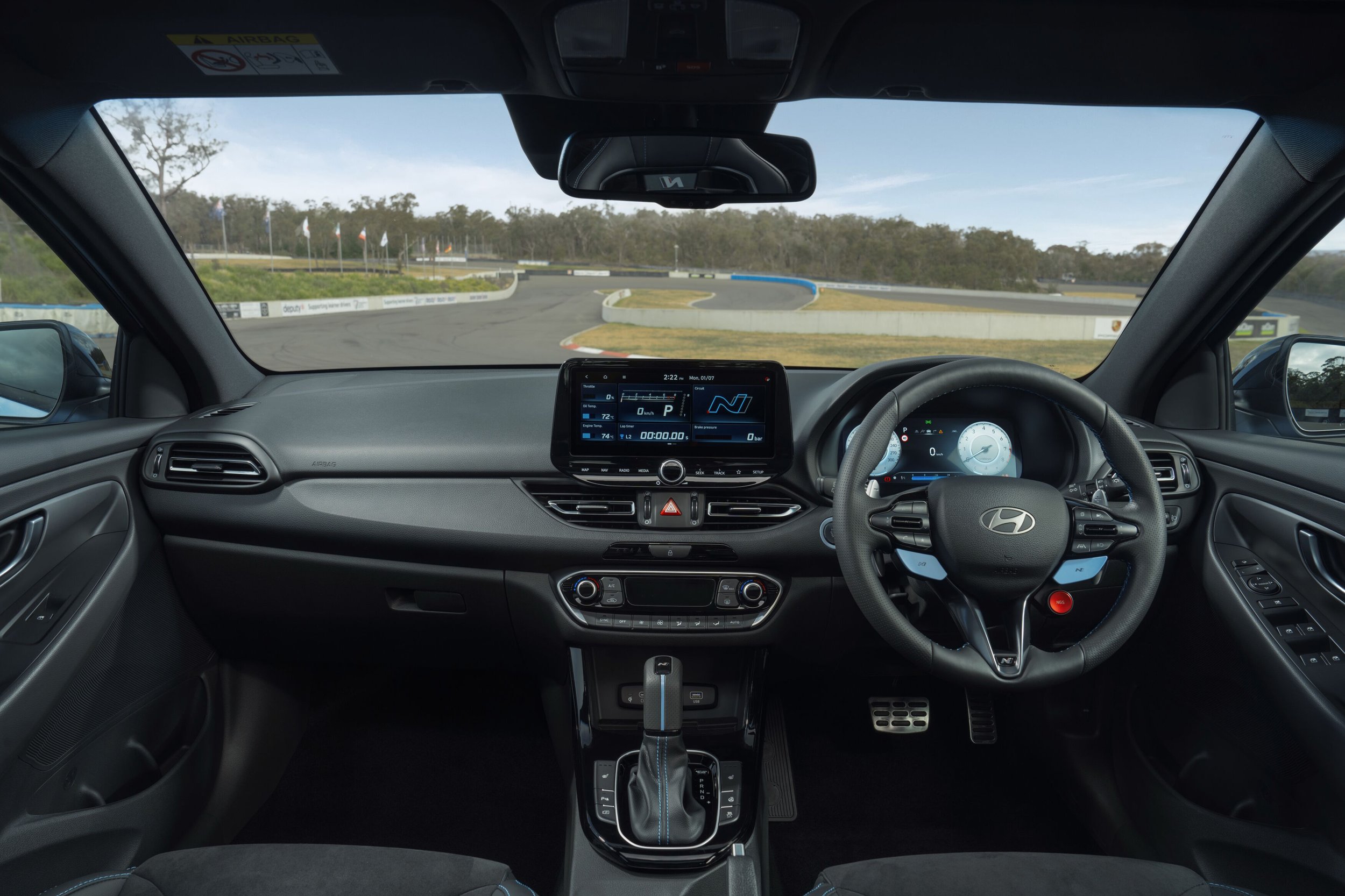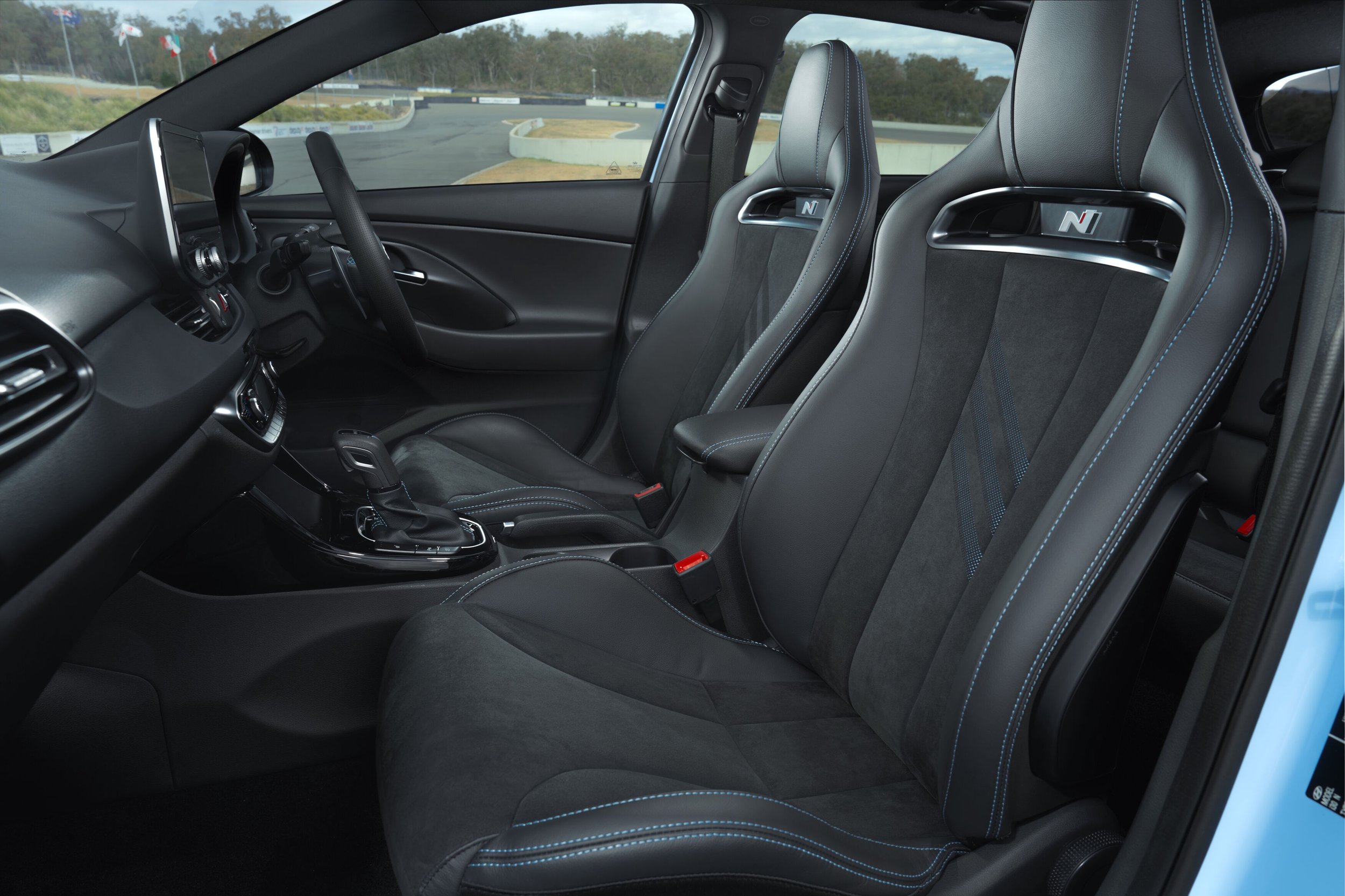Review: Hyundai i30 N DCT
Hot hatches are becoming an endangered species in today’s SUV-saturated world, but clearly someone forgot to tell Hyundai. Which is a good thing. The i30 N is still here, still angry, and still revving to remind us what driving joy used to feel like before everything became automated and anaesthetised. The 2025 update keeps the fire alive with subtle refinements, a touch more polish, and that all-important 8-speed DCT.
The Drive:
Put simply, the 2025 Hyundai i30 N is a riot. From the moment you thumb the start button, there’s a rasp and a bark from the active exhaust that lets you know it hasn’t gone soft. Even in its most civilised setting, there’s an underlying sense of tension, like it’s just waiting for an excuse to go absolutely feral.
Around town, the DCT is surprisingly docile. It’ll potter about with all the manners of a commuter hatch when left in Normal mode. The steering is light, the ride is firm but tolerable (especially on the updated dampers), and the shifts are buttery smooth. This is a hot hatch you can daily. But it's the kind of daily that winks at you every time you enter a tunnel.
But tap the "N" button, and the polite commuter vanishes. Throttle response sharpens instantly. The steering weights up with meaty resistance. Exhaust valves crack wide open. The shifts become lightning fast and delightfully aggressive, with every upshift delivered with a shotgun crack and every downshift spat out like a rally car on overrun.
Hyundai’s e-LSD continues to be the party trick in the twisty stuff. Point it into a corner and the front end just bites. Hard. Torque is intelligently shuffled side to side, letting you get on the power earlier and harder than you think you should. There’s virtually no torque steer either, just pure grip and grin-inducing rotation.
There’s still a playful edge to the chassis, too. Lift mid-corner and the rear gets light, but never unruly. It’s chuckable, forgiving, and properly communicative, something too many new performance cars seem to have forgotten how to be.
The Powertrain:
The turbocharged 2.0-litre four-cylinder hasn’t changed much, and that’s a good thing. It still pumps out 206kW (280PS) and 392Nm, and feels strong right through the rev range. It’s a muscular unit with just the right amount of lag to keep things interesting.
The DCT is an absolute gem. Quick, intuitive, and almost always in the right gear. You can take manual control via the paddles, but honestly, it reads your mind so well you rarely feel the need. There’s also a rev-matching feature and launch control that lets you catapult off the line with hilarious effectiveness. Hyundai claims 0-100km/h in 5.4 seconds, and it feels every bit that quick.
Hyundai’s N Grin Shift overboost mode also gives you 20 seconds of full-send aggression - perfect for overtakes or giving your passenger an existential crisis.
Interior and Tech:
Inside, the i30 N balances sport and everyday usability perfectly. The seats are some of the best in the segment - supportive, nicely bolstered, and finished in Alcantara with N badging. The new 10.25-inch infotainment system is slick and responsive, and comes with all the right goodies: Apple CarPlay, Android Auto, N-specific track timers, G-force meters, and lap telemetry.
There’s also:
USB-C and USB-A ports up front, so you’re covered no matter what cable you’re carrying.
A wireless charging pad, neatly tucked under the centre stack, which keeps your phone in place even during… spirited driving.
Dual-zone climate control, because even hot hatch hooligans appreciate cabin comfort.
A surprisingly solid stereo, if you're the type to soundtrack your downshifts.
Rear ISOFIX mounting points, making it one of the few performance cars where you can clip in a baby seat and crack the exhaust open on the way to daycare.
The digital instrument cluster morphs depending on the drive mode, with a particularly angry ‘N Mode’ that looks like it was pulled straight out of a racing sim. It’s all quite over-the-top, but gloriously so.
Boot space? Rear seats? Yes, they exist, and they’re usable. This is still a practical five-door hatch at its core, but one that makes every drive to the shops feel like a qualifying lap. Boot Space comes in at 381 liters with the rear seats up, and 1,287 liters with the rear seats folded down.
What it Gets Over the Standard i30:
206kW 2.0L turbo engine
8-speed wet dual-clutch transmission
Electronically controlled limited-slip diff
Adaptive suspension with multiple drive modes
Active variable exhaust
N performance seats with Alcantara trim
19-inch lightweight alloys on Pirelli P-Zeros
Larger brakes, reinforced chassis
Track-ready drive modes (incl. launch control, G-meters)
SPECS:
Engine - 2.0-litre turbocharged petrol 4-cylinder.
Power - 206kW
Torque - 392Nm
Transmission - 8-speed dual-clutch automatic (DCT)
Driven wheels - Front-wheel drive
Weight - 1541kg (kerb)
0-100km/h (claimed) - 5.3 seconds
Fuel economy (claimed) - 8.5L/100km
Fuel economy (as tested) - 12.0L/100km
Fuel tank capacity - 50L
Fuel requirement - 95 octane premium unleaded
CO2 emissions - 197g/km
Emissions standard - Euro 5
Braked tow capacity - 1600kg
Priced From: $50,000 +ORC’s
Ownership – Value Without Compromise:
Hyundai’s capped-price servicing scheme makes ownership painless: roughly $377/year over 5 years, and that includes non-competitive track-day cover under the factory 5-year unlimited km warranty. Read that again: track-day warranty.
Fuel economy is claimed at 8.5L/100km combined, though if you drive it the way it begs to be driven, expect closer to 11–12L. Worth every drop.
Verdict:
The 2025 Hyundai i30 N DCT isn’t trying to be a Golf GTI or a Civic Type R. It’s rawer than the Golf, and more fun at lower speeds than the Honda. It’s the kind of car that wants you to drive. To push buttons, flick paddles, and giggle your way through roundabouts like a delinquent with a licence.
Sure, the ride can be firm. And no, it doesn’t have the premium interior of some German rivals. But for the money, nothing else offers this much fun, this much tech, and this much real-world performance in such a usable package.
The i30 N is still the people’s champion of hot hatches. And now, with the DCT, it’s sharper, quicker, and more accessible than ever.
